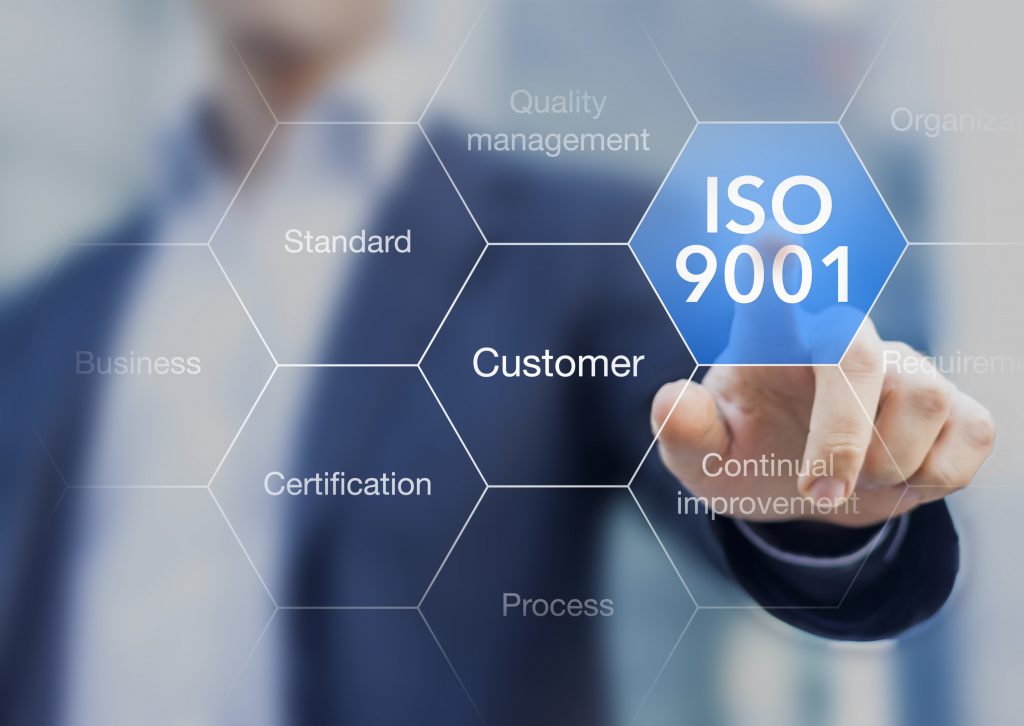Most veteran business professionals, regardless of their industry, are perpetually hunting for ways to take the “risky” out of the “business.” Construction is no different; contractors and crews alike face a myriad of risks and liabilities on a daily basis. But there’s more to addressing risk in construction than just wearing a hard hat.
In fact, the larger a construction crew gets, the more they have to reckon with risk management the way major corporations do — at least if they want to avoid taking losses that sink the whole business.
Properly managing risk in construction can lead to more stable, sustainable growth, while failure to do so leads to uncertainty and financial insecurity. So, let’s take a closer look at the what, the why, and the how.
Also read: Top Construction Project Management Software
Why risk management matters
All businesses face risks, but not always the same ones. Healthcare professionals, manufacturing plants, logistics teams, and record labels all find themselves liable for a variety of things. Some overlap, and some do not.
Construction projects can be incredibly risk-sensitive. They face many of the biggest concerns of other industries, such as:
- Workplace safety and OSHA compliance, like manufacturing and industrial organizations
- Authorizing work, filing permits, and adhering to coding and licensing standards, much like healthcare and legal professionals
- Shipping and supply chain problems, scheduling issues, and concerns with coordinating efforts, like logistic crews
They also face some issues that are less common outside of their line of work. For example:
- Dealing with public infrastructure—interfering with local utilities, disrupting foot or street traffic, and preventing unauthorized public access
- Setbacks and losses due to adverse weather conditions, unexpected geological conditions or events, and even the occasional human sabotage (such as an arsonist)
- Political and bureaucratic complications, such as conflicts over zoning, land rights, environmental impact, etc.
Whatever the specifics of the circumstance, project, or industry, it’s important for every organization to understand at least one thing: No amount of profit or success can outpace poorly managed risk profiles in the long run.
Like a poor diet and lackluster exercise regimen lead to an increased risk of health concerns over a long enough lifetime, so too does a poorly managed risk appetite for businesses. Where this becomes a concern unique to the construction industry, however, is in how the financials work for most build teams.
In construction, payment doesn’t usually happen up front, at least not in full. The details will vary from team to team based on a number of factors—team size, project scope and budget, and clientele, for starters—but in general, crews are often operating on the promise of future paydays.
Many projects are initially funded with business loans to get the work started on schedule, which leaves accounts receivable staff chasing forthcoming payments to stay ahead of debt liabilities. This means that teams are usually operating with the accounting equivalent of “lean manufacturing,” with cash flow functioning much like just-in-time inventory.
Under those conditions, it doesn’t take much of a delay, disruption, or loss to have a destabilizing impact. Even for teams that run the show with more of a cushion and less operating debt, income is still most often tied to a smaller number of large, expensive projects. If a single build falls through or takes a major loss, it can be devastating for the whole organization.
Proper risk management can minimize these losses. It can maximize profits, lead to more accurate financial forecasts, and improve the overall stability and longevity of business growth.
Best of all, it’s not a job that has to be done entirely by hand. Like the power tools and heavy equipment used to make manual labor easier, the right software can simplify and streamline risk management, reducing the cost to achieve success in these efforts.
Also read: Top Construction CRM Software
Common risk types in construction projects
There are a whole host of risks, from minute to monumental, that construction teams deal with (whether they know it or not). Most fall into a few categories, such as the ones listed below.
Project timelines and logistics
Clients may not pay in full until the job is done, but crew members definitely expect to get a regular paycheck so they can keep paying their own bills. As mentioned above, finishing a job is a critical part of the process that leads to a payday. And the longer work takes, the more expensive a job becomes before the final invoice can be sent. Even the most conservative contractors can’t pay their teams indefinitely if the job can never be billed.
This means that delays and setbacks are devastating to construction projects.
The two worst problems a general contractor faces regularly are jobs that take too long to complete and jobs that grind to a halt and leave the team without work to do while they wait.
And a lot of things can lead to either problem. Supply chain issues, scheduling goofs with subcontractors, permits, and red tape—you name it.
Also read: Construction Project Management: 5 Features to Consider
Circumstantial and environmental factors
While supply delays, wrong orders, or absent tradesmen can be predicted and planned for to a certain extent, other potential disasters cannot. Acts of god, political unrest, or even fires started by stray cigarette butts can upend an entire project with little to no warning.
Physical safety
Let’s not forget those hard hats, however. Workplace safety is critical to construction jobs because on-the-job injuries aren’t mere papercuts or wrist cramps. The work being done and tools being used can quite literally cost crews an arm and a leg (or worse) if proper protocols aren’t in place. And, all sympathy and tragedy aside, workplace accidents are a major expense, which is enough of a reason on its own to try to prevent them.
Financial stability
Back in the ancient year of 2008, a large number of crews learned the hard way that speculating on future profits in this industry could be a serious mistake. No paycheck is guaranteed except for those that have already been cashed, and broader economic upheavals like housing crashes, pandemics, or lumber shortages due to forest fires in foreign nations can demolish any hope for future paydays practically overnight.
Legal and compliance
And let’s not forget that construction is a highly regulated industry. Those regulations aren’t universal, either, so different jobs will have certain variations on what compliance efforts have to be implemented. Negligence is no small matter, and it can lead to significant fines on its own.
Also read: 8 Common Risks in Project Management
Applying risk management to construction projects
Ok, so all of those things listed above sound like the opposite of “fun and profit.” What can be done about them?
Enterprise risk management (ERM) is a specialty of its own that major corporations leverage to handle things like this on a large scale. ERM uses a five-step process, one that’s just as useful for a construction business as for a tech giant:
- Identification
- Assessment
- Response
- Monitoring
- Evaluation and reporting
In a nutshell, risk management as a strategy revolves around taking an inventory of current and predicted future risks, comparing potential losses to potential gains, and then addressing risks accordingly. Some risks can be avoided altogether with the right preparation. Some can be mitigated significantly, but not removed. Some are too severe and merit turning down opportunities rather than accepting the potential for loss.
Once an analysis is made and responses implemented, then it’s a matter of keeping an eye out so nothing potentially problematic goes unnoticed.
Mind you, this description of risk management is very reductive, as the actual discipline is impressively deep and complex. And, as many businesses don’t actually have room in their budgets for dedicated risk professionals, it’s important to find another way to leverage it effectively. That’s where software comes in.
Implementing risk management without driving up costs
Look, we know that risk management isn’t likely your home court, and the same goes for software. Nobody expects the plumber to run the power cables, and no one expects the roofers to lay the floor tiles. That’s why, as a manager/general contractor/business owner, it’s important to know how to do it by knowing who or what can do it.
You buy cordless drills because they do the job more efficiently than it can be done by hand, and you hire cement trucks to spare yourself the labor and logistics. The right application for risk management is no different. The key here is that you don’t use a nail when you need a screw, so to speak.
Different risk management platforms will be geared toward specific “use cases”— i.e., optimal applications. For instance, some are built to help manage vendor risk in particular, so you can minimize the amount of liability you deal with by partnering with other businesses during projects. Others are targeted toward financial risk, or information security, or similar.
Bottom line: Be sure to do your research and find the software vendor that targets the kind of work you do in particular. And don’t ever believe a claim of “one size fits all” universality. No software fits every use case, and even if it did, construction crews already know that multi-tools are always less adept at a given task than a dedicated tool for that job.
Preparing for risk
Risk is a complicated matter, and it’s not an easy one to address effectively. That doesn’t mean you should leave it unaccounted for, however. Don’t let unmanaged risk lead to otherwise preventable losses, and don’t let it be an onerous responsibility when the appropriate tool can make it a straightforward one.
Under those conditions, it doesn’t take much of a delay, disruption, or loss to have a destabilizing impact. Even for teams that run the show with more of a cushion and less operating debt, income is still most often tied to a smaller number of large, expensive projects. If a single build falls through or takes a major loss, it can be devastating for the whole organization.
Proper risk management can minimize these losses. It can maximize profits, lead to more accurate financial forecasts, and improve the overall stability and longevity of business growth.
Best of all, it’s not a job that has to be done entirely by hand. Like the power tools and heavy equipment used to make manual labor easier, the right software can simplify and streamline risk management, reducing the cost to achieve success in these efforts.
Also read: Top Construction CRM Software
Featured Partners
FAQs
What is construction risk management?
A: Construction risk management is the identification, evaluation, and addressing of risks and liabilities specific to the construction industry to plan for, minimize, and prevent losses as effectively as possible.
What are the types of risks for construction projects?
A: There are numerous risks applicable and relevant to construction projects, but they include financial risks, logistics risks, safety risks, legal risks, environmental and circumstantial risks, and more.





